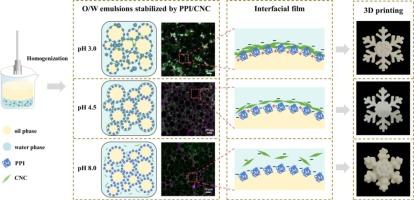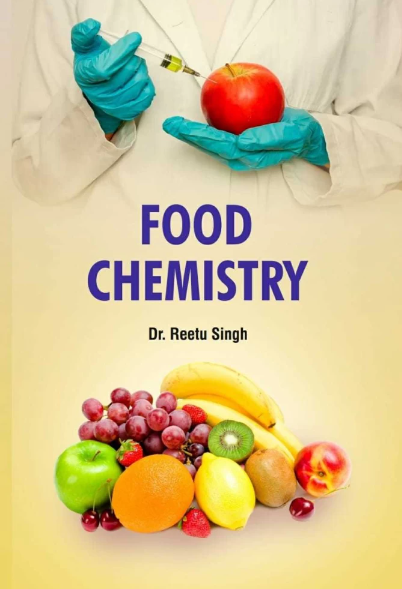Synergistic stabilization of oil-in-water emulsion gels by pea protein isolate and cellulose nanocrystals: Effects of pH and application to 3D printing
IF 8.5
1区 农林科学
Q1 CHEMISTRY, APPLIED
引用次数: 0
Abstract
In this study, pea protein isolate (PPI) and cellulose nanocrystals (CNC) were used to prepare oil-in-water emulsions, and the effects of pH and the oil content on the properties of the emulsions were investigated. The microstructural analysis revealed that PPI and CNC formed complexes by electrostatic attraction at pH 3.0 and 4.5, which assembled a dense interfacial layer around the oil droplets, improving emulsification performance. Moreover, the emulsions at these pH conditions exhibited semi-solid gel properties when the oil content was increased to 75 wt%, with better viscoelasticity compared to pH 8.0 and high thixotropic recovery rates in rheological experiments. Printing of flat stacked models with these high internal phase emulsions had a deformation rate of around 5 %, indicating desirable shear resistance and fidelity. These findings would offer valuable insights for developing fat substitutes and their application as edible inks for 3D printing.


豌豆分离蛋白和纤维素纳米晶体对水包油乳液凝胶的协同稳定作用:pH值的影响及其在3D打印中的应用
以豌豆分离蛋白(PPI)和纤维素纳米晶(CNC)为原料制备水包油乳液,考察了pH值和含油量对乳液性能的影响。微观结构分析表明,在pH 3.0和4.5条件下,PPI和CNC通过静电吸引形成配合物,在油滴周围形成致密的界面层,提高了乳化性能。此外,在这些pH条件下,当油含量增加到75% wt%时,乳液表现出半固体凝胶性质,与pH 8.0相比,具有更好的粘弹性,并且在流变实验中具有较高的触变回收率。用这些高内相乳剂打印的平面堆叠模型的变形率约为5 %,表明具有理想的抗剪切性和保真度。这些发现将为开发脂肪替代品及其作为3D打印可食用墨水的应用提供有价值的见解。
本文章由计算机程序翻译,如有差异,请以英文原文为准。
求助全文
约1分钟内获得全文
求助全文
来源期刊

Food Chemistry
工程技术-食品科技
CiteScore
16.30
自引率
10.20%
发文量
3130
审稿时长
122 days
期刊介绍:
Food Chemistry publishes original research papers dealing with the advancement of the chemistry and biochemistry of foods or the analytical methods/ approach used. All papers should focus on the novelty of the research carried out.
 求助内容:
求助内容: 应助结果提醒方式:
应助结果提醒方式:


